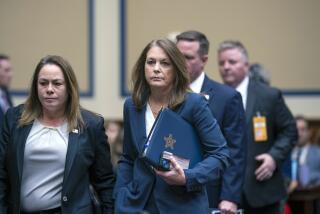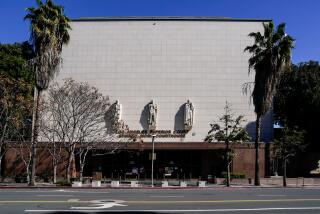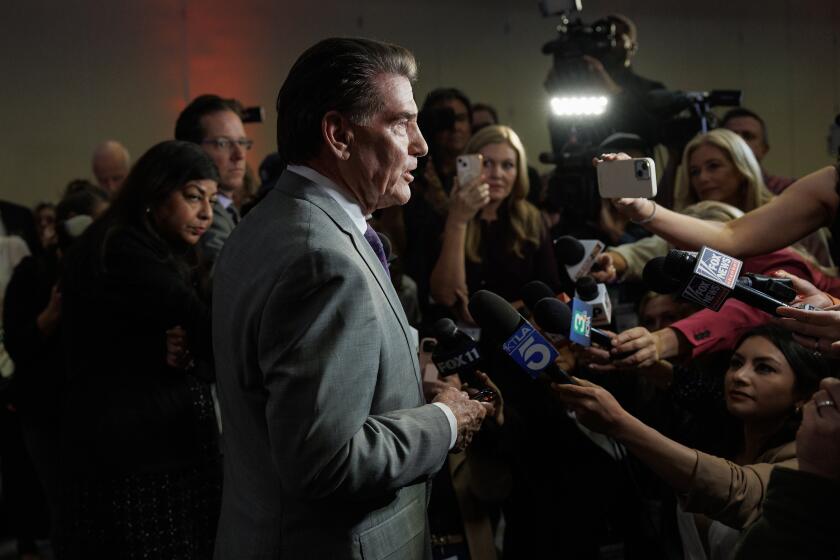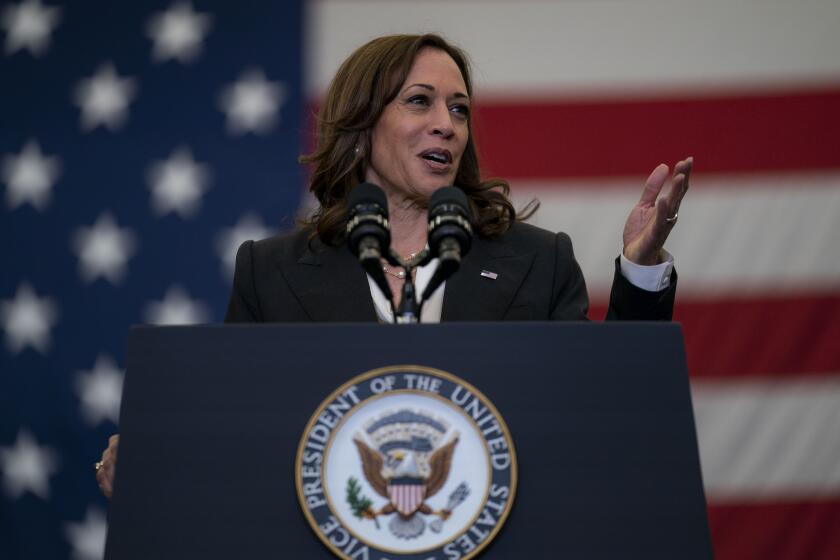PERSPECTIVE ON LABOR : A Latino at the Top of the Ladder
Miguel Contreras, the new executive secretary-treasurer of the Los Angeles County Federation of Labor, would be busy enough if his only responsibility was to be the designated Labor Leader of Greater Los Angeles.
After all, the County Fed, as it is widely known, has been a political force here since the 1960s, when former Mayor Tom Bradley first ran for citywide office with the help of organized labor. Although Bradley lost that round, he finally won the mayor’s office in 1973, and for the next 16 years, one of his most reliable supporters and trusted advisers was William R. “Bill” Robertson, head of the County Fed.
Robertson’s hand-picked successor was James M. Wood, who died earlier this year of lung cancer at the age of 51. Wood had been a mentor to Contreras, even naming him to head the County Fed’s political committee, so Contreras ran for election to serve out the remaining two years of Wood’s four-year term.
In May, representatives of the County Fed’s 325 unions elected the 43-year-old Contreras to the executive secretary-treasurer’s post by acclamation. He is the first Latino to head the federation in its 102-year history. And now, as he introduces himself around town, Contreras finds himself being asked not just about the the future of organized labor, but about the future of this region’s biggest ethnic group. For, whether Contreras wants it or not, he has taken on an unofficial responsibility that could prove almost as important as his day job: “Latino Leader.”
Fortunately, the soft-spoken Contreras learned about being both a labor and a Latino leader from someone who did a good job of handling both responsibilities during his lifetime--Cesar Chavez.
Contreras was a 17-year-old fruit picker in the San Joaquin Valley when his family joined Chavez’ United Farm Workers. That was in 1970, when Chavez signed his union’s first labor contracts with California table grape growers at the end of the five-year strike and grape boycott that made Chavez famous.
Three years later, when grape growers refused to renew their UFW contracts and Chavez launched another strike and boycott, Contreras became a picket line captain. His leadership abilities caught the attention of Chavez, who put Contreras on the UFW staff.
That second big UFW strike culminated in the California Agricultural Labor Relations Act, which set up procedures for union representation elections on California farms that are still in effect.
After helping Chavez in some of those early elections, Contreras left UFW in 1977 to become an organizer of hotel, restaurant and casino workers in California and Nevada. He spent 10 years working his way up in the Hotel Employees and Restaurant Employees Union, coming to Los Angeles in 1988 to help rebuild HERE’s Local 11, which had been put under the trusteeship of the union’s national office. It was here that Contreras met the union activist who would become his wife, Maria Elena Durazo, the leader of a dissident faction who would eventually be elected president of Local 11.
An outspoken and vivacious woman, Durazo is the best-known labor leader in Los Angeles these days. She is also the most controversial. Her organizing tactics have included not just strikes and protests against some of the city’s biggest hotels, but also a negative publicity campaign against the city’s important tourism industry. Durazo’s brief anti-tourism campaign, including a videotape that highlighted Los Angeles’ problems after the 1992 riots, still rankles many local business and political leaders. But Durazo remains unapologetic about the tactic, as does her husband.
“If we [in organized labor] do our jobs, we can keep what happened in 1992 from happening again,” he says flatly.
I must agree. For, even as thousands of high-paying union jobs left Southern California with the end of the Cold War and the transfer of heavy manufacturing to other regions, Los Angeles remains an industrial powerhouse thanks to Latino workers. A recent UCLA study estimated that there are more industrial jobs in Los Angeles County than in the Chicago area--roughly 650,000 positions in light manufacturing, food processing, the garment trade and related industries.
Half of those jobs are filled by Latinos. And the best way to keep those workers, and their families, content with life in this city is ensuring that they get paid decent wages and benefits. And, for better or worse, one good way to do that is by having them bargain collectively with their employers.
As important as an emerging middle class of Latino business people and professionals is to the future of Los Angeles, we would be foolish to overlook the well-being of an equally large Latino population that is the blue-collar backbone of the region’s emerging economy.
With a labor--and Latino--leader like Contreras around, I don’t think we will.
More to Read
Sign up for Essential California
The most important California stories and recommendations in your inbox every morning.
You may occasionally receive promotional content from the Los Angeles Times.






